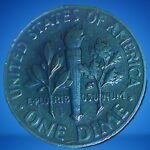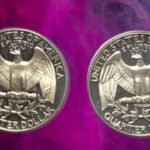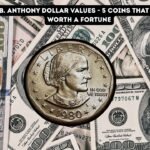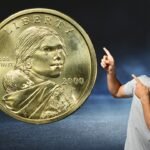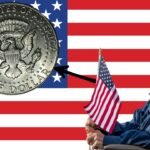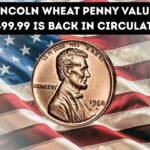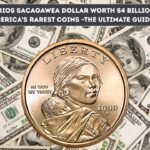It’s not every day that a simple box of cereal hides a small fortune inside. But back in 2000, that’s exactly what happened. Tucked inside boxes of Cheerios was something unexpected — a shiny new U.S. dollar coin featuring Sacagawea. At the time, it was just part of a marketing promotion. Nobody thought twice about it. But fast forward a few years, and coin collectors were buzzing. Why? Because some of those Cheerios dollars turned out to be among the rarest modern coins in American history.
So, what’s the big deal about these coins? Well, it all starts with a small difference — a detail so subtle most people wouldn’t notice unless they looked closely. You see, when the U.S. Mint prepared for the launch of the Sacagawea dollar in 2000, they sent about 5,500 coins to General Mills to include in Cheerios boxes as part of a nationwide promotion. The idea was to get people excited about the new “Golden Dollar.” But here’s where it gets interesting: the coins placed in those boxes weren’t just any Sacagawea dollars. They were early test strikes, with a distinct design on the eagle’s tail feathers on the reverse side.
Now, if you’re thinking, “Really? Tail feathers made the difference?” — yes, exactly that! The Cheerios version featured sharply defined, detailed tail feathers, unlike the smoother, less intricate design on the regular production coins. This small difference ended up turning the cereal-box coins into a numismatic sensation. Only a few thousand had that special reverse, and as collectors realized it, the value skyrocketed. Some of these coins have sold for thousands of dollars, depending on their condition and certification.
To be fair, not every coin found in a Cheerios box is that ultra-rare type. Most of them were actually just regular 2000-P Sacagawea dollars that had the standard design. So, if you happen to find one lying around, don’t pop the champagne just yet. But if you have one with the enhanced tail feathers — well, that’s when you might want to get it authenticated by a professional grading service.
On the flip side, the whole Cheerios Dollar story is a great example of how little details can turn everyday objects into treasures. The coin itself wasn’t made of gold, nor was it part of a secret minting error. It was just a small variation that slipped through before the final design was approved. Yet that’s precisely what makes it fascinating to collectors — it’s a genuine piece of U.S. Mint history, hiding in plain sight among breakfast cereal giveaways.
Here’s a quick comparison to help you see what sets the Cheerios Sacagawea Dollar apart:
| Feature | Regular 2000-P Sacagawea Dollar | Cheerios Sacagawea Dollar |
|---|---|---|
| Release Year | 2000 | 2000 |
| Promotion | None | Cheerios Cereal Giveaway |
| Reverse Design | Simplified tail feathers | Highly detailed tail feathers |
| Estimated Quantity | Millions | Around 5,500 (only some with special design) |
| Current Value (approx.) | $1 to $10 | $5,000–$25,000+ (depending on condition) |
Honestly, what makes this coin so captivating isn’t just the rarity — it’s the story behind it. Imagine opening a box of cereal one morning in 2000, finding this shiny new dollar, and tossing it in your coin jar without a second thought. Then, two decades later, discovering that same coin could pay for a new car. That’s the kind of twist that makes collecting coins so addictive.
Even the U.S. Mint didn’t officially recognize the unique reverse design right away. It took collectors comparing coins and sharing photos online to bring attention to the difference. Once confirmed, the Cheerios Dollar quickly became legendary. Today, it’s considered one of the rarest modern coins and a must-have for serious collectors.
If you’re thinking about checking your old change or rummaging through childhood keepsakes, it might be worth it. Who knows? That “just another dollar” in your drawer could be a piece of history. And the fun part is — even if you don’t find one, you’ll probably learn a lot about how fascinating coin collecting can be.
So, the next time someone tells you that cereal boxes never come with surprises anymore, just tell them about the Cheerios Sacagawea Dollar — proof that even a breakfast promotion can become a legend in American coinage.
FAQs
Q: How can I tell if I have a real Cheerios Sacagawea Dollar?
Look closely at the eagle’s tail feathers on the reverse. If they’re sharply detailed and more intricate than usual, it could be the rare Cheerios version.
Q: Are all Cheerios Sacagawea Dollars valuable?
No, only the ones with the enhanced tail feather design are rare and valuable. Many Cheerios boxes included standard coins.
Q: How much is a Cheerios Sacagawea Dollar worth?
Depending on condition and authentication, they can range from $5,000 to over $25,000.
Q: Where can I sell one if I have it?
Reputable coin dealers, major auction houses, or certified grading services like PCGS or NGC are the best places to start.
Q: Why is it called the “Cheerios” dollar?
Because it was part of a promotional giveaway in Cheerios cereal boxes in early 2000, right before the Sacagawea dollar’s official release.

